Written by Matt Dickinson
29th August 2017
If a member of your group is caught in an avalanche in the backcountry YOU will be conducting the rescue effort. Except in rare cases a professional mountain rescue team cannot get to the site quick enough to save a buried person. So you need to know the basics of how your equipment works and how to conduct a search for an avalanche victim. In this article we review the basics.
• Shovel (metal blade) e.g. BCA B1 shovel
• Probe (240+cm) e.g BCA Stealth
• Transceiver/beacon (modern digital model) e.g. BCA Tracker 2
Please note the beacon is worn on the body, underneath the top layer and the avalanche beacon should always be on transmit (or send) when entering the mountain terrain (off-piste). The probe and shovel should be readily accessible in the backpack. Everyone must carry the full set of equipment and you need to be sure how your equipment works! Only fast and correct use of the kit can help save lives.
The manufacturers of avalanche safety equipment provide good information and guidance on the use of their products, search patterns, etc. and a lot of this is available online. The different types of transceivers have various advantages and limitations, but all of them are only as good as the operator - practice is the key to a fast location time.
Statistics compiled by the Swiss reveal that a rescue before 15 min burial time, the survival probability is 92%. After 15 minutes the chances of survival drop steeply (see chart below). After 1 hour the chances of survival are just 30%.
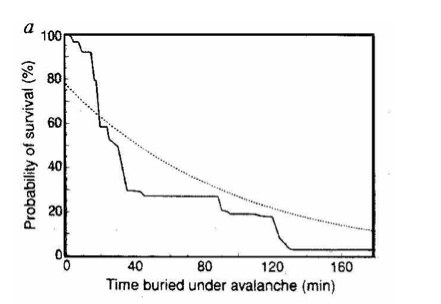
If you witness an avalanche:
1. Watch the avalanche and the victims carefully.
2. Remember the point where the victims were caught in the avalanche
3. Try to be calm, check for any further dangers first, and then organise the rescue.
4. Look for clues on the snow surface
5. Decide a primary search area
6. Turn your avalanche beacon on ‘receive’, get your shovel and probe ready and start searching. If there are several people in the group instruct 1 or 2 people to conduct the beacon search, the rest should assemble the shovel and probes and await instruction from the beacon searches.
7. Search also with your ears and eyes.
8. Alert other skiers and call for rescue.
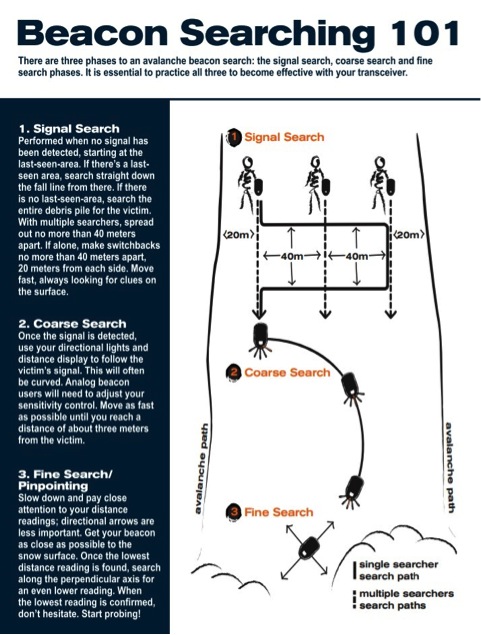
Shovel strategically.
If the victim is buried fairly deep in the snow, you'll need to dig a large hole to get at him. As a rule, the hole will need to be at least as large as the square of the depth of burial (that is, if the victim is buried 5 feet beneath the surface, the hole would need to be 5 feet wide by 5 feet long). Start digging downhill from the probe, and throw the snow downhill. Uncover the victims face first.
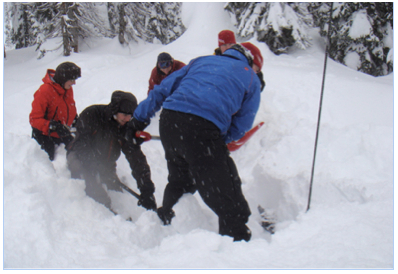
First Aid: A B C D E
Airway – excavate the face first, check the mouth for packed snow
Breathing – excavate the chest
Circulation - start CPR if needed
Disability – be cautious as to the neck and spine. Ask the causalty where it hurts!
Exposure – avoid further cooling of the body, and protect further.
When the victim is not wearing a transceiver:
Organised probe lines are used to search for victims who may not have transceivers or whose transceivers may not be functioning. Three holes per step is a fast and efficient method for organised probe lines. The searchers stand elbow to elbow and probe tree times each (to the left, in the centre and to the right) with equal spacing along the same line. The searchers then step forward one stride and repeat the procedure. A systematic approach is crucial. A disorganised group can easily ‘step over’ the victim. Once an area has been probed, it should be marked off so the group isn’t repeating the search in the same area.
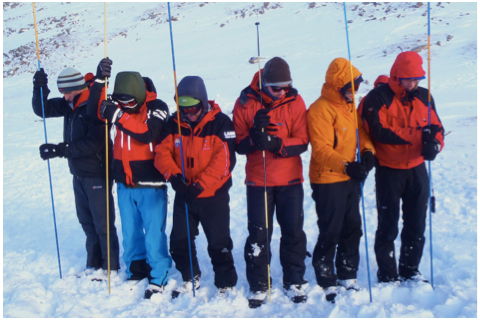
Accident Notification
Local resue numbers can be found printed on liftpasses and piste maps. The international rescue number in European Union is 112.
- WHO is reporting (your name, phone number, location)?
- WHAT happended?
- WHERE is the place of accident (altitude, location, coordinates)?
- WHEN did the accident take place?
- HOW many buried victims?
- WEATHER and visibility at the place of the accident.
Matt
 Off-Piste
Off-Piste Ski Touring
Ski Touring Via Ferrata
Via Ferrata Ice Climbing
Ice Climbing Alpine Glacier Trekking
Alpine Glacier Trekking Worldwide Trekking
Worldwide Trekking



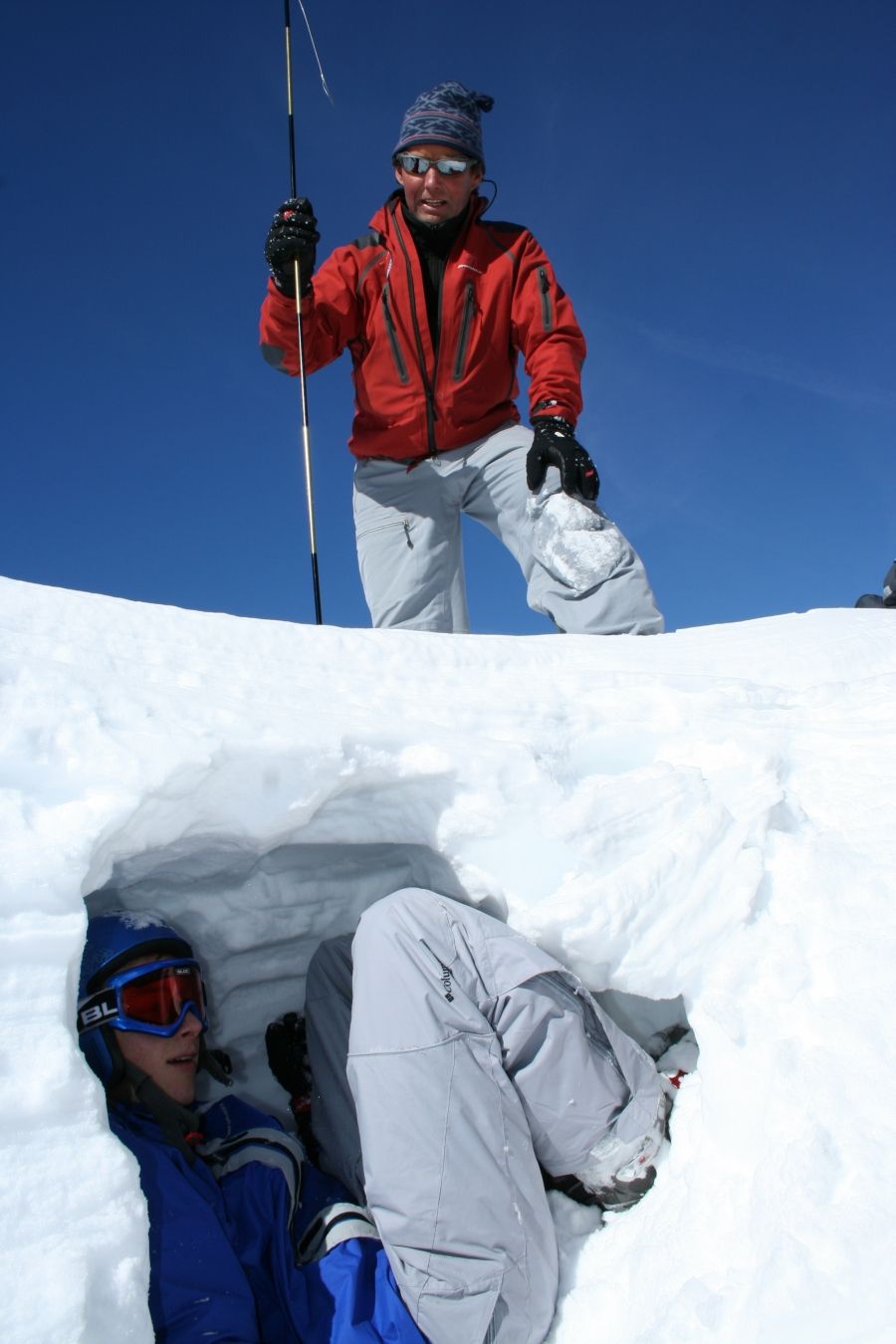




 Travel Website Development
Travel Website Development